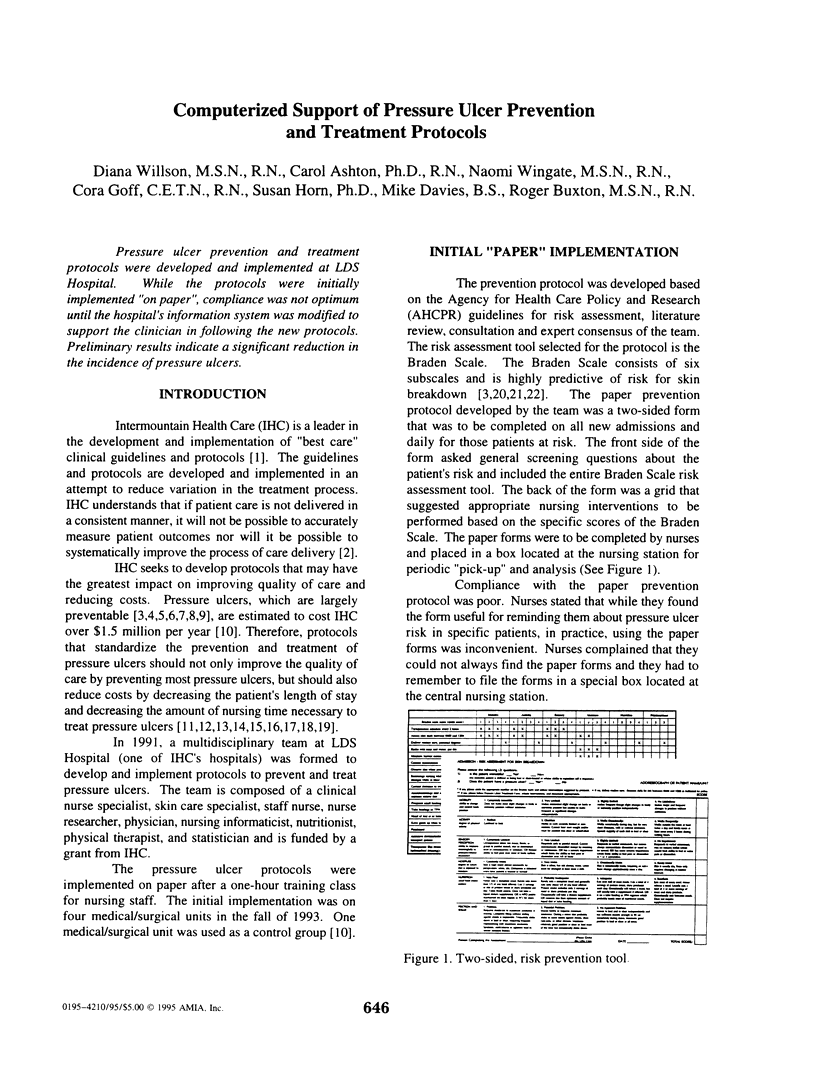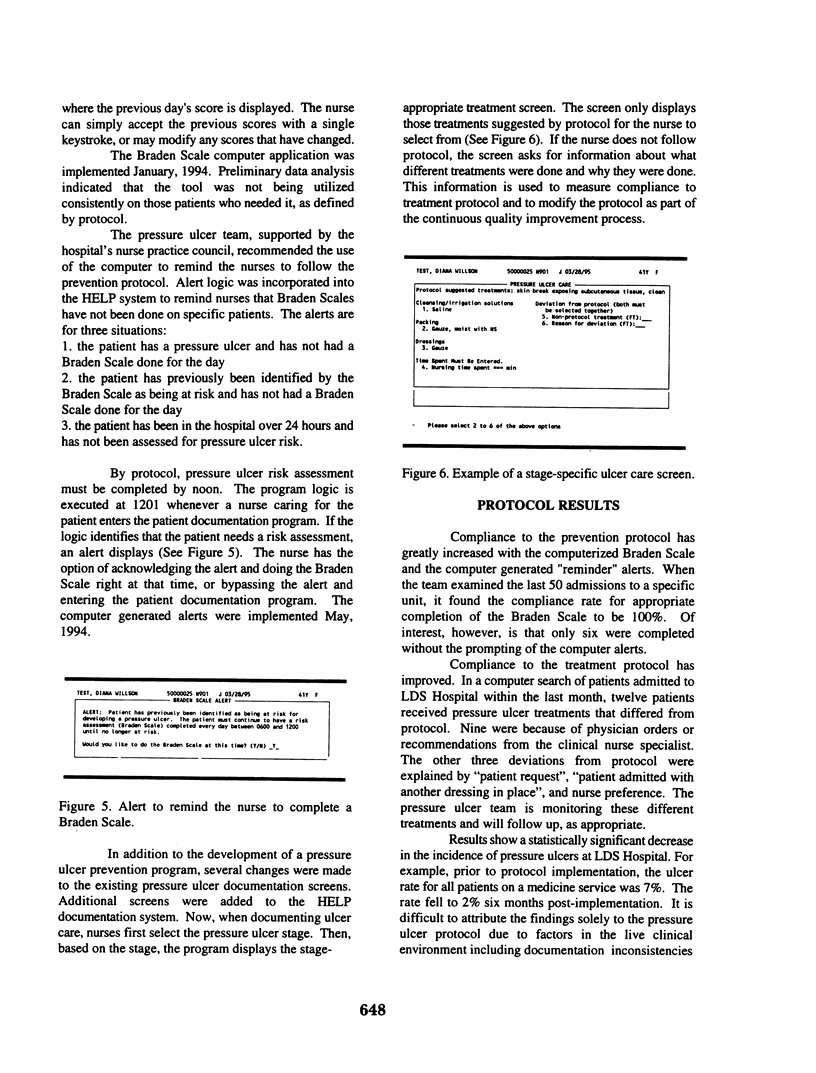Abstract
Pressure ulcer prevention and treatment protocols were developed and implemented at LDS Hospital. While the protocols were initially implemented "on paper", compliance was not optimum until the hospital's information system was modified to support the clinician in following the new protocols. Preliminary results indicate a significant reduction in the incidence of pressure ulcers.
Full text
PDF




Selected References
These references are in PubMed. This may not be the complete list of references from this article.
- Allman R. M., Laprade C. A., Noel L. B., Walker J. M., Moorer C. A., Dear M. R., Smith C. R. Pressure sores among hospitalized patients. Ann Intern Med. 1986 Sep;105(3):337–342. doi: 10.7326/0003-4819-105-3-337. [DOI] [PubMed] [Google Scholar]
- Bergstrom N., Braden B. J., Laguzza A., Holman V. The Braden Scale for Predicting Pressure Sore Risk. Nurs Res. 1987 Jul-Aug;36(4):205–210. [PubMed] [Google Scholar]
- Bergstrom N., Demuth P. J., Braden B. J. A clinical trial of the Braden Scale for Predicting Pressure Sore Risk. Nurs Clin North Am. 1987 Jun;22(2):417–428. [PubMed] [Google Scholar]
- Bodnar B., Myron P. Portrait of practice: reducing the prevalence of pressure ulcers. Decubitus. 1992 Mar;5(2):49–52. [PubMed] [Google Scholar]
- Braden B. J., Bergstrom N. Clinical utility of the Braden scale for Predicting Pressure Sore Risk. Decubitus. 1989 Aug;2(3):44-6, 50-1. [PubMed] [Google Scholar]
- Braden B. J., Bryant R. Innovations to prevent and treat pressure ulcers. Geriatr Nurs. 1990 Jul-Aug;11(4):182–186. doi: 10.1016/s0197-4572(05)80339-8. [DOI] [PubMed] [Google Scholar]
- Clarke M., Kadhom H. M. The nursing prevention of pressure sores in hospital and community patients. J Adv Nurs. 1988 May;13(3):365–373. doi: 10.1111/j.1365-2648.1988.tb01431.x. [DOI] [PubMed] [Google Scholar]
- Frantz R. A. Pressure ulcer costs in long term care. Decubitus. 1989 Aug;2(3):56–57. [PubMed] [Google Scholar]
- Frye B. A. A coat of many colors: a program to reduce the incidence of hospital-originated pressure sores. Rehabil Nurs. 1986 Jan-Feb;11(1):24–25. doi: 10.1002/j.2048-7940.1986.tb00489.x. [DOI] [PubMed] [Google Scholar]
- Goode P. S., Allman R. M. The prevention and management of pressure ulcers. Med Clin North Am. 1989 Nov;73(6):1511–1524. doi: 10.1016/s0025-7125(16)30613-7. [DOI] [PubMed] [Google Scholar]
- Hibbs P. The economics of pressure ulcer prevention. Decubitus. 1988 Aug;1(3):32–38. [PubMed] [Google Scholar]
- Maklebust J. Pressure ulcers: etiology and prevention. Nurs Clin North Am. 1987 Jun;22(2):359–377. [PubMed] [Google Scholar]
- Van Ness C. The implementation of a quality assurance study and program to reduce the incidence of hospital-acquired pressure ulcers. J Enterostomal Ther. 1989 Mar-Apr;16(2):61–64. [PubMed] [Google Scholar]


